Anthony Burton
History in Marple did not begin with Samuel Oldknow as Anthony Burton set out to demonstrate in his November talk to the Society. There is evidence going back as far as the Paleolithic but Anthony concentrated on 17th century, that turbulent period that saw the rise to prominence of our most notable figure - John Bradshaw.
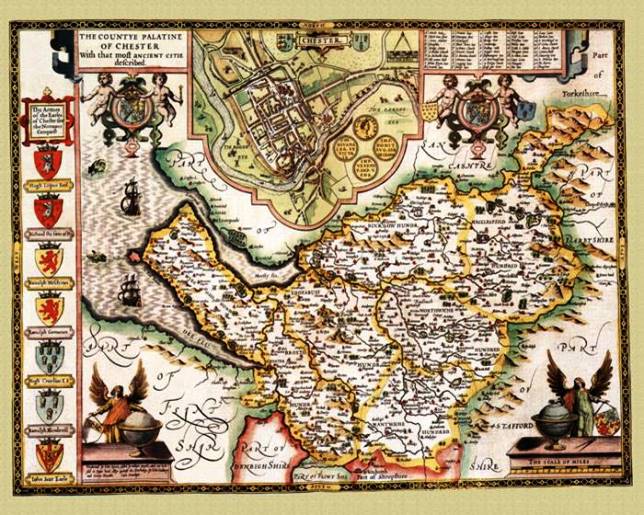
John Speed’s map of Cheshire, 1611 click the image to see a close-up of Marple and area
Anthony did not dwell long on Bradshaw’s rise and sudden fall. Instead he moved on quickly to discuss John’s elder brother, Henry. At that time Marple was just a scattering of farmsteads throughout the area and Henry was the local squire. There are a few maps dating from that time but the only location of any significance was the local chapel, an outlying daughter chapel of St Mary’s in Stockport. It was difficult not to take sides in the Civil War and Henry assisted in the formation and control of a local Parliamentary army under Sir William Brereton. He eventually achieved the rank of Colonel and at one stage played a major role in the court-martial and execution of Lord Derby in 1751, for which he had to face a reckoning at the time of the Restoration.
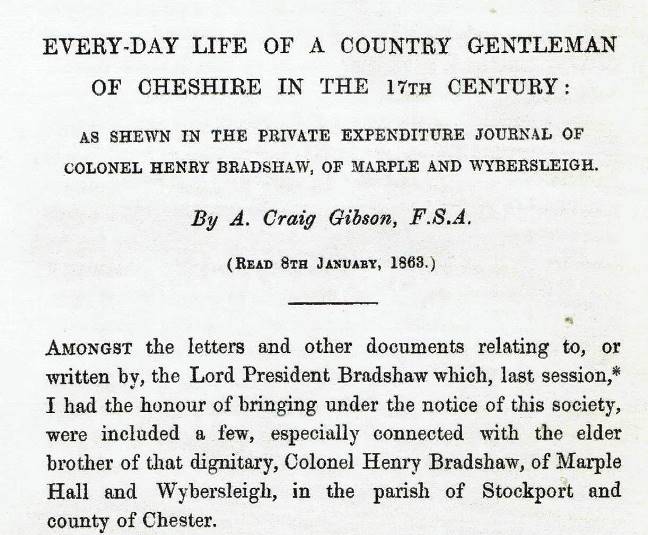
We know a surprising amount about Henry as, for a period, he kept a diary. Some entries are in Latin, presumably in case other people got hold of it, but in it he noted his day-to-day activities. Quite a mundane life but interesting for all that. Many days he spent just drinking with friends but on others we are given details of expenditure which opens a window to his life. Once a month or so he goes to Manchester to buy books and to experience life in the big city. Most of the entries related to his agricultural estate. Just because he was part of the landed gentry it did not give him a life of idleness. Much of his income was from rents but he also worked part of the land himself.
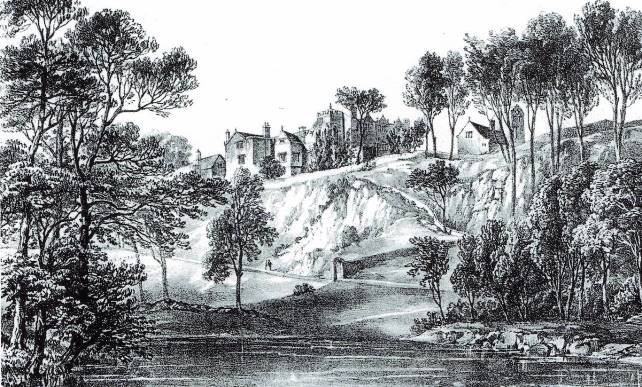
Marple Hall by Edward Twycross, from the Mansions of England and Wales, vol 5, 1850
Marple Hall itself was improved substantially during this period, changing from a typical farm house to an impressive small manor house situated above a steep slope leading down to the Goyt. It was modified and extended to a certain extent but this, together with a substantial stable block added in the 1660s, remained much the same until it was demolished in the 1950s. It was however, far grander than most houses in the area although during this century there was a considerable rebuilding in stone by the more prosperous husbandmen and yeomen of the district.
There was no village centre at this time as even the church stood alone though in a prominent position. Most dwellings were scattered amidst the fields worked by each farmer and it is only in later centuries that they were enveloped by newer housing. Indeed some of the more outlying ones show that pattern even today as on the moors above Mellor. The names of these occupiers live on both in the graveyards of Marple and Mellor churches and in the names of some local families. Names such as Swindells, Heginbotham and Hibbert can still be found today. But the most obvious sign of this period of Marple’s history is the buildings themselves. Some large, some small, some greatly altered and others looking much as they were 350 years ago.
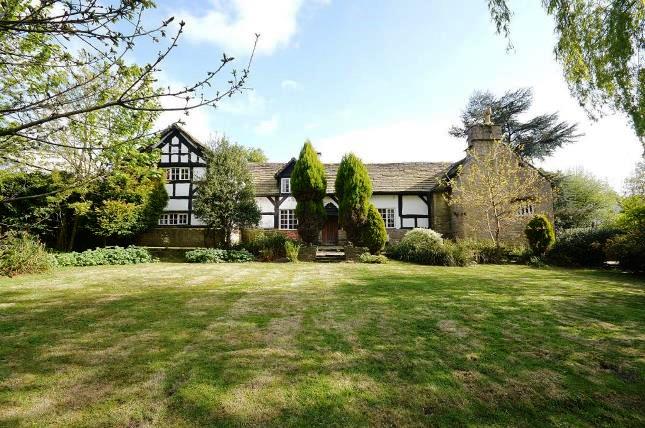
Farmsteads such as Old Manor Farm [above], Wood Farm, Pear Tree Farm, Whitebottom Farm
Husbandmen and artisans further down the social scale but still prosperous enough to afford stone-built houses - Spout House Cottage, Peere Swindell’s Cottage, Shepley Lane, Lumb House
Yeomen and their more substantial houses - Lomber Hey House, Ridge End, Hibbert Lane, Spout House,
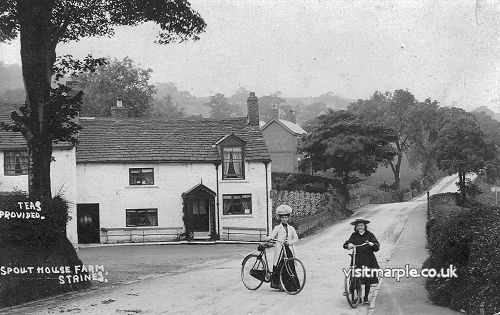
Spout House
And the biggest and best dwellings owned by people just below the level of local gentry. Buildings such as Barnsfold Manor, Strines Hall and probably what is the best seventeenth century house in our area - Mellor Hall with a datestone of 1688.
The concept of a listed building is not just a dry academic category but it is living proof of our local history. It started well before Samuel Oldknow and goes back to the stone age but the seventeenth century is the first time that we have more than just a few remnants of where and how our ancestors lived.

